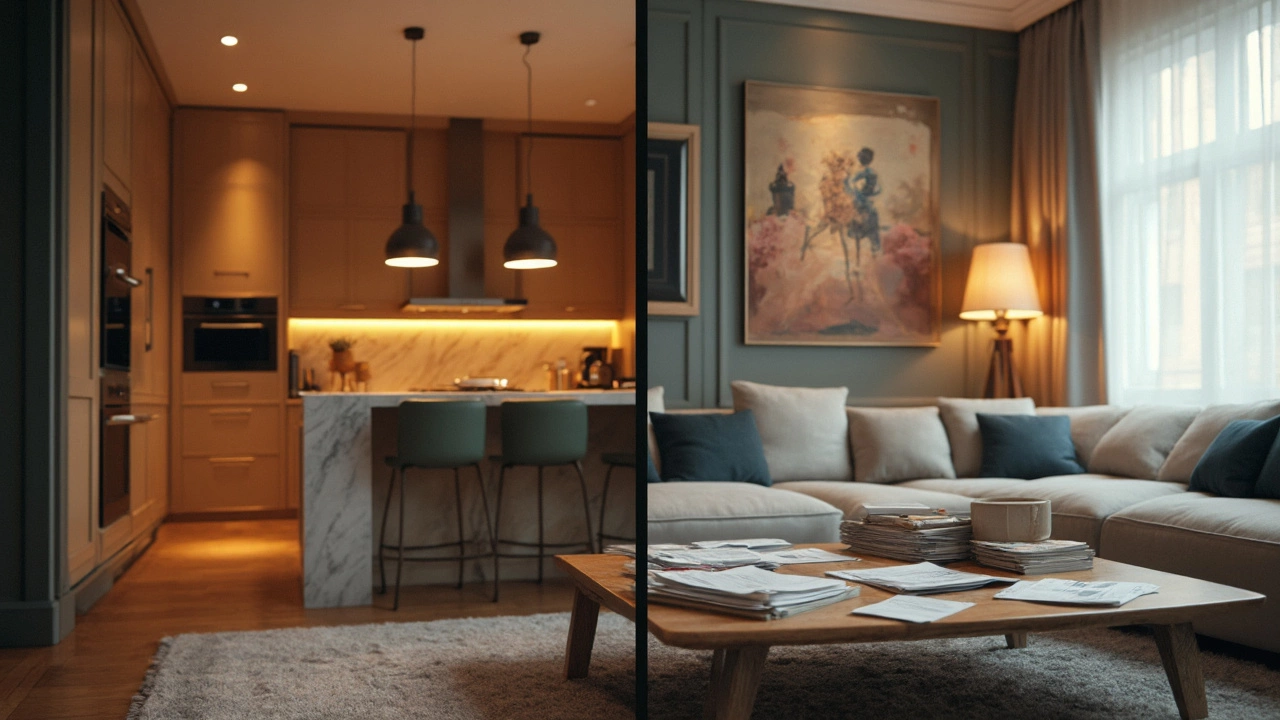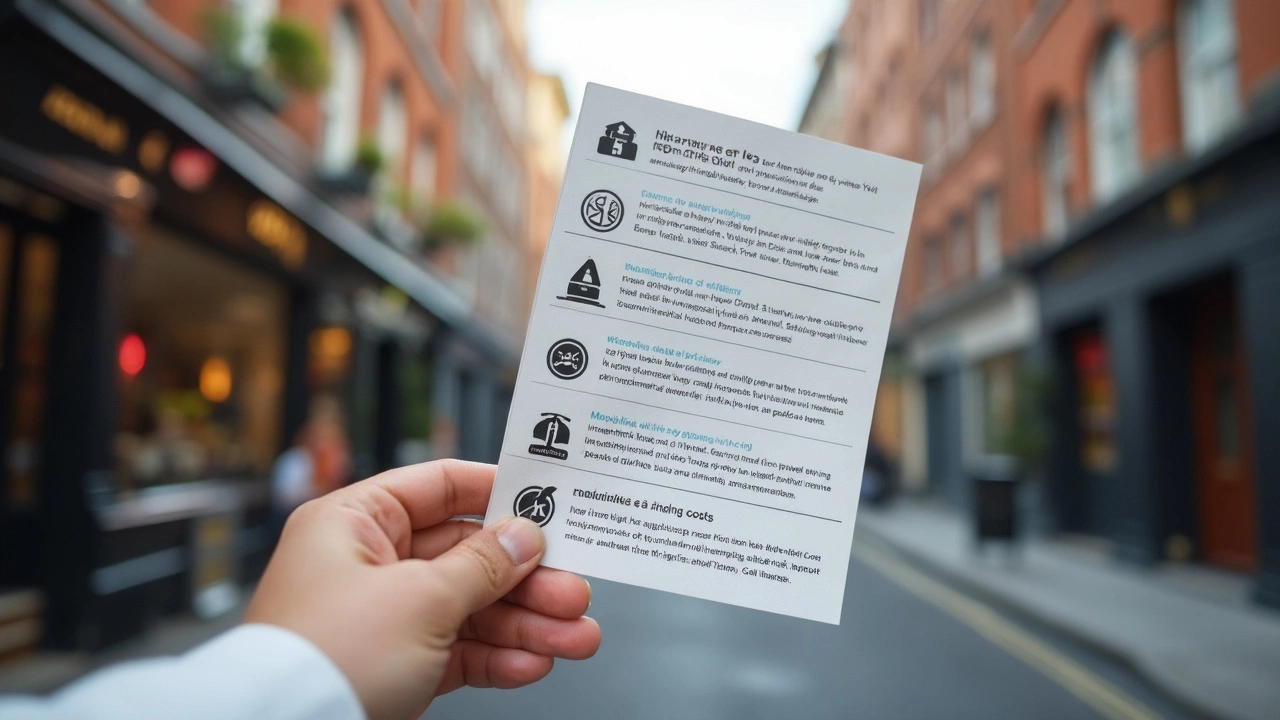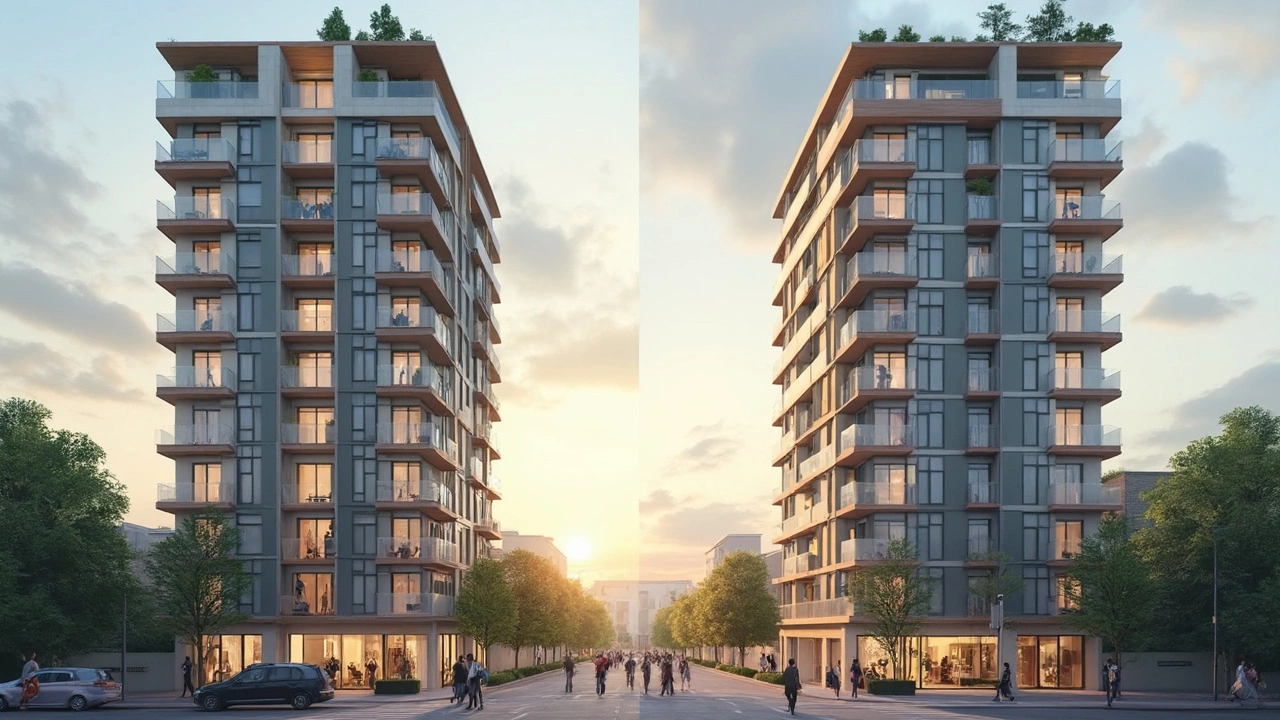If you hear the word "luxury," what pops into your head? Probably marble countertops, rooftop pools, or maybe a doorman who actually remembers your name. But when you're searching for a new place—especially in a big city—the words "luxury condo" and "luxury apartment" get tossed around so much that it's tough to spot the difference.
Here's the reality: it's not just about fancy finishes. The lines between a luxury condo and a high-end apartment go way deeper—think ownership rights, fees, rules, and even your say in how things are run. These details matter if you want your next move to actually feel like an upgrade and not just a paint job with a bigger rent check. Stick around if you want to avoid costly surprises and really understand what you’re signing up for.
- Ownership and Control
- Amenities Showdown
- Costs and Hidden Fees
- Lifestyle and Community Perks
- Tips for Choosing What Fits You
Ownership and Control
This is the part where luxury condos and apartments take totally different paths. When you pick a condo, you’re actually buying a slice of the building. This means you own your unit and usually have a say—big or small—in building rules, upgrades, or any renovations in shared spaces. If there’s a condo board, you can vote on decisions or even run for a spot. You’re pretty much calling the shots for your own place, as long as you stick to community guidelines.
Now compare that with a regular luxury apartment: you’re renting, not owning. Even when the place feels fancy, the decision-making stays with the building owner or management company. If you want to repaint the living room, install smart locks, or keep a pet, you need permission—and the answer isn’t always yes. Basically, you’re a guest in someone else’s investment, no matter how long you stay.
Here’s a quick table that lays out the main differences for you:
| Luxury Condo | Luxury Apartment |
|---|---|
| Buy your own unit | Lease/rent a unit |
| Can vote on building issues | No say in building management |
| Responsible for repairs inside unit | Landlord handles most repairs |
| Monthly HOA or condo fees | Monthly rent only (sometimes extra fees) |
One more thing—condo owners can often rent out their unit, letting someone else live there for a while. This isn’t usually an option for apartment renters, since subletting is often banned or super restricted. If future flexibility is on your mind, a condo puts more of the control right in your hands. Not surprisingly, this extra power and flexibility is a major reason people invest in a luxury condo instead of staying in rental mode.
Amenities Showdown
It’s easy to get dazzled by glossy photos of rooftop lounges, infinity pools, and marble lobbies. But not all luxury living options are built the same when it comes to amenities. So, what are you really getting when you move into a luxury condo compared to a luxury apartment?
Condos usually go for exclusivity. Many buildings have private gyms, high-end spas, electric car charging stations, concierge services, movie theaters, and wine cellars. You’ll also notice details like smart home tech and heated parking. The catch? Condo buildings are often smaller, and owners tend to vote on which upgrades to install or how to spend money on shared spaces. This gives residents more control but can slow down improvements.
Luxury apartments, especially those managed by big companies, bring the bells and whistles too—think saltwater pools, coworking spaces, pet spas, Amazon package lockers, game rooms, and spin studios. The difference is that these amenities are part of a package, and the landlord handles everything. Got a broken treadmill in the gym? Maintenance usually fixes it fast, since their reputation depends on it.
- Condos: Expect more customization and input on what’s offered, plus the potential for truly unique features. But you’ll often pay extra for upgrades or repairs.
- Apartments: Everything is typically included in your rent. No need to debate or vote—just enjoy whatever’s there and submit a work request when something breaks.
One thing to check: Hidden costs. Condo owners might pay monthly fees for the pool or rooftop deck, even if you never use them. Luxury apartments roll these fees into rent. If you’re the type who actually uses the amenities, this can make a big difference in value.

Costs and Hidden Fees
Let’s get real: the numbers on paper are just the start. When you compare a luxury condo and an upscale apartment, the sticker price is only part of the story. Condos usually come with extra monthly fees called HOA (Homeowners Association) dues. These can range from $300 to over $1,500 a month, depending on things like building age, location, and the pile of amenities you’ll get. It's easy to overlook until you get your first bill and realize your dreamy rooftop pool isn't exactly free.
If you buy a condo, you’ll likely put down 10–20% upfront, plus closing costs—think $5,000–$20,000 right off the bat in fees, taxes, and insurance. Renting a luxury apartment, you’re looking at move-in costs like a security deposit and first month’s rent, but rarely anything else upfront.
| Expense Type | Luxury Condo (Owner) | Luxury Apartment (Renter) |
|---|---|---|
| Monthly Payment | Mortgage + HOA (~$3,000+) | Rent (~$3,000+) |
| Maintenance Fees | Included in HOA | Usually included in rent |
| Utilities | Some covered by HOA, others extra | Some covered by landlord, others extra |
| Special Assessments | Possible, not common—can be $1,000+ | Rare—usually not charged |
Watch out for "special assessments" if you own a condo—these come up when the building needs big repairs or upgrades and the reserve fund isn’t enough. You could get hit with a bill for thousands with only 30 days to pay. With luxury apartments, surprise costs are rare, since most repairs are on the landlord.
Also, condos usually mean paying property taxes and higher homeowner’s insurance. With an apartment, you’ll probably get by with basic renters insurance, which can be as cheap as $15 a month. Always ask for a fee sheet before you sign anything—hidden costs can sneak up fast, and nobody likes surprise bills eating into their fun money.
Lifestyle and Community Perks
If you're chasing that perfect vibe, the little details in lifestyle and community perks can make all the difference. Here’s where the difference between a luxury condo and a high-end apartment really shows up, beyond just four walls and a price tag.
In luxury condos, owners usually care way more about who shares their space and how things run. Most condos will have an owners’ association (HOA). This means rules about everything from pool hours to paint colors, plus regular meetings where you can actually vote on pet limits or community events. In a rental apartment building, the landlord (not you) calls all the shots. That can make a place feel less personal.
Looking at social perks, condos often lean into building a tight-knit, long-term community. Expect potluck nights, holiday mixers, and group fitness classes right in the building. Some even have private clubs, rooftop lounges, or wine cellars you can actually reserve for friends and family. Apartments might throw the occasional pizza night, but the vibe is less "neighbors for life" and more "people you pass in the hallway."
Amenities are one thing, but how you actually use them plays a huge part. Many luxury condos limit gym or pool access to residents and their guests—no long lines or surprise crowds. Apartments, especially the bigger ones, might have amazing gyms or co-working spaces, but during peak hours, they get packed. In a survey from 2024, 68% of condo residents said they felt more connected to their neighbors compared to only 43% of renters in luxury apartments.
| Feature | Luxury Condo | Luxury Apartment |
|---|---|---|
| Community Events | Frequent, resident-organized | Occasional, building-organized |
| Say in Rules | Yes, via HOA votes | No, landlord decides |
| Guest Access | More flexible, often resident-approved | Controlled by management |
| Social Connection* | 68% feel "connected" | 43% feel "connected" |
*Self-reported in a 2024 resident lifestyle survey
So, if you want to actually get to know the folks living next to you—and maybe help plan the next Super Bowl party—a luxury condo leans social. If you’re after convenience and don’t want to mess with HOA meetings, a luxury apartment might fit better.

Tips for Choosing What Fits You
So you've nailed down the basics, but how do you actually figure out if a luxury condo or a high-end apartment is your best match? It isn't just a vibe thing—it comes down to your priorities, how much control you want, and what you can really afford both now and in the long run.
- Decide if you want to own, or just live in style. Condos mean you’re buying, which comes with responsibility. Renting an apartment means less commitment but also zero control over upgrades or building rules.
- Check the monthly costs, not just the sticker price. Condo owners face HOA fees, which can climb as high as $2,000 a month in cities like New York or Miami. Apartment renters have just rent—sometimes with added amenity fees.
- Ask about flexibility. If you love to move every couple years, apartments let you pack up with a 60-day notice. Condos lock you in for longer; selling can take time and paperwork.
- Look beyond the shiny lobby. Some developers slap “luxury” on buildings just for trendy lighting or a rooftop grill. Ask for a list of amenities, check if they’re kept clean, and even peek at online reviews to know if reality matches the brochure.
- Community rules matter. Condo associations often have strict rules—think pet size, rental terms, or even what your balcony can look like. Apartments set rules too, but they're usually simpler and the property manager handles most problems.
Here's a table laying out some side-by-side differences to keep in mind:
| Factor | Luxury Condo | Luxury Apartment |
|---|---|---|
| Ownership | Buyer owns unit | Renter only |
| Monthly Fees | HOA fee + mortgage + property taxes | Rent + possible amenity fee |
| Control over Unit | High—can remodel interiors | Low—must ask landlord |
| Contract Length | Own until you sell | Fixed lease, easy to end |
| Amenities | Often more personalized, fewer units | More standardized, sometimes bigger gyms/pools |
One more thing: Check your gut. Some people love having a stake in the building and community, others just want hassle-free living. Whatever you pick, make sure it feels right for how you want to live—not just how cool the lobby looks on Instagram.
